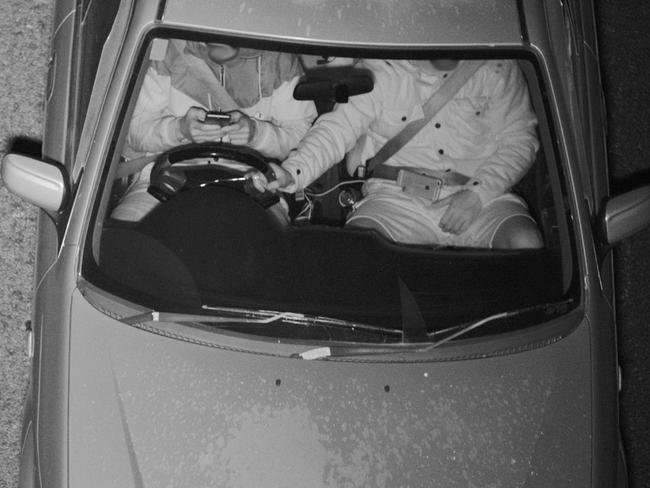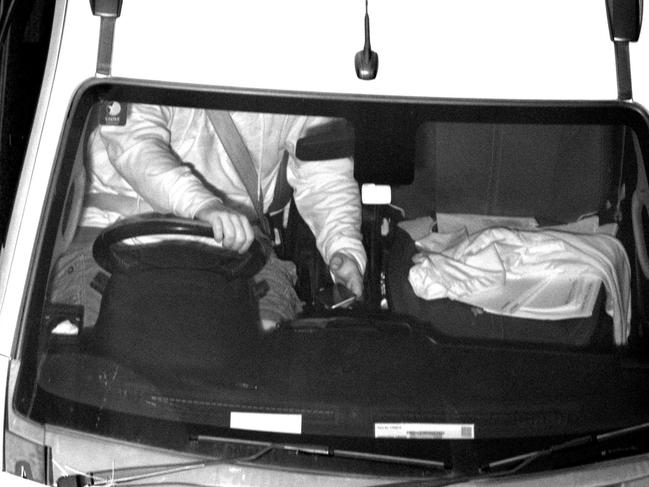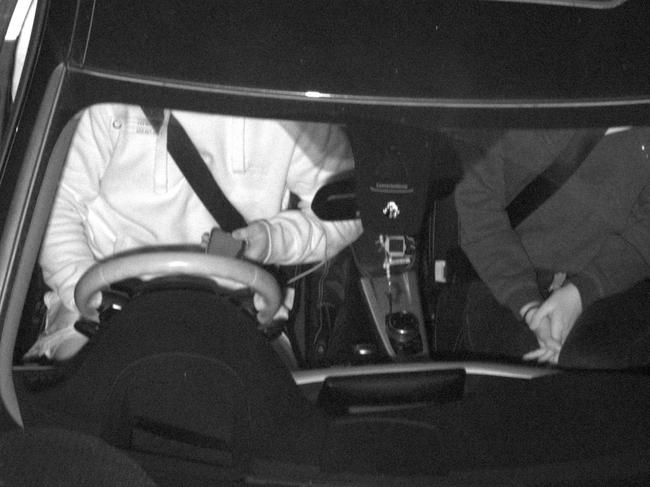New camera technology targets motorists on mobile phones
These are the extraordinary “gotcha” pictures that will strike fear into reckless drivers. New cameras capable of detecting motorists illegally using mobile phones in cars travelling up to 300km/h are on NSW roads.
NSW
Don't miss out on the headlines from NSW. Followed categories will be added to My News.
These are the extraordinary “gotcha” pictures that will strike fear into reckless drivers.
New cameras capable of detecting motorists illegally using mobile phones in cars travelling up to 300km/h are on NSW roads.
The world-first technology uses artificial intelligence and can operate in both fixed and mobile locations, 24 hours a day and in all weather conditions.
The NSW-made cameras “penetrate” through windshields, capturing drivers sneakily using their mobiles at the wheel.
During a four-week test on Sydney’s M4, more than 11,000 drivers were snapped on their mobile phones at high speed.
In one jaw-dropping photo, a driver was caught holding a phone with both hands while the passenger steered the car as it travelled at 80km/h.
Another offender was speeding at 120km/h in a 100km/h zone while looking down at his phone, while a truck driver was busted using an iPad on his lap.

MORE FROM MIRANDA WOOD
WHY WESTERN SYDNEY AIRPORT WON’T HAVE A CONTROL TOWER
15 HOURS A YEAR SHAVED OFF DRIVING TIMES
EXCLUSIVE LOOK INSIDE SYDNEY’S ‘BAMBOO BASKET’
From next month, the cameras will be switched on at Anzac Pde in Moore Park and the existing test site on the M4 at the Clunies Ross St overpass at Prospect.
The state government will conduct a three-month pilot to further test the technology and if successful drivers will receive warning letters for a month before fines are enforced.
Australian company Acusensus developed the cameras and was one of three companies competing for the state government contract that was awarded last week.


Roads Minister Melinda Pavey said images taken during the M4 test in October “confirm all our worst nightmares”.
“People are trying to be sneaky and people are being dangerous and not driving, not concentrating and it’s impacting safety and it’s impacting congestion,” she said.
“Police have a line of sight above the window line, but now we’ll have a line of sight through the window, from top down, so you won’t be able to hide anymore. We’ve got the technology now to get you.”

Penalties for drivers illegally using mobile phones are five demerit points and a $337 fine or $448 for those caught in a school zone. During double demerit periods, motorists will lose 10 points.
A career in road safety turned into a mission of the heart for Alexander Jannink.
The 34-year-old invented the new camera technology after a close friend was hit and killed by a drug-impaired driver using a mobile phone.
“Like a lot of people I have been personally affected by it and I think that distracted driving is one of the big unaddressed causes of road trauma right now,” he said.
“My goal is to try and improve road safety and I thought this was a really big area in which we can make an impact that hasn’t been addressed yet.”

Mr Jannink’s friend James Rapley was cycling in Los Angeles when a young driver in a Mercedes drifted into the bike lane, hitting him from behind.
The software developer had relocated to Chicago for work and was on a layover in LA before heading home to Melbourne for Christmas.
“I was going to see him just a couple of days later,” Mr Jannink said of the tragic 2013 accident.
The pair developed a friendship after Mr Jannink hired Mr Rapley to develop a NSW mobile speed camera enforcement system.
“We worked together for about three years very closely,” Mr Jannink said.
Mr Rapley was then headhunted to work in the US.
Despite mourning the loss of their son, Mr Rapley’s family and his long-term girlfriend requested the 19-year-old driver not face jail time and instead carry out significant community service.
Mr Jannink founded the company Acusensus with the purpose of developing the world-first, mobile phone busting cameras and reduce the number of families impacted by the loss of a loved one.
“I’m really looking forward to the future in which we can see a reduction in the road trauma rates,” he said.

Ms Pavey said she had insisted the new cameras were portable.
“If everyone finds out where the sites are they will all just put the phone down as they drive under that bridge or under that camera,” she said.
“There has got to be spontaneity around it.”
Rules for mobile phone use in cars include no texting, emailing, video messaging and taking photos.
Drivers can make and answer calls but only if the phone is fixed in a cradle or can be operated without touching any part of the device such as via Bluetooth.

Acusensus managing director Alexander Jannink said the cameras, made in the Southern Highlands, produced images that were “highly prosecutable” and double-checked by humans.
At any one time, more than three per cent of NSW drivers are distracted by illegally using a mobile phone, significantly increasing their crash risk. Even at 60km/h cars cover 33m per second.
“The lower the phone is, the longer the amount of time the driver has their eyes off the road,” Mr Jannink said.
A state government survey found 74 per cent of the community support the use of cameras to enforce mobile phone offences.


